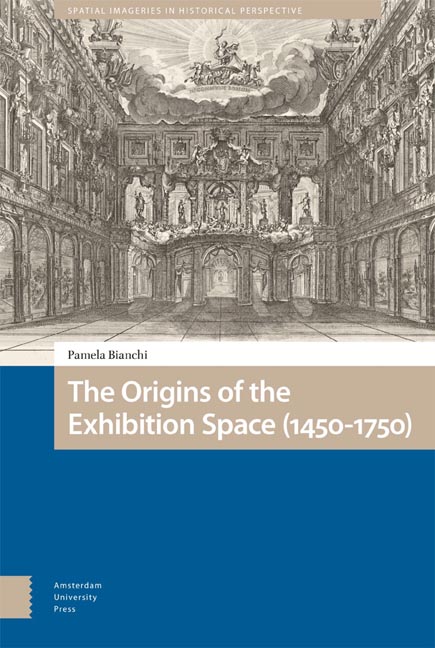Spaces in Between
Published online by Cambridge University Press: 14 October 2023
Summary
Abstract: This chapter studies the ephemeral distinction between internal and external, and public and private spaces of the time, which is a critical question for the research. It insists above all on the role played by furniture within the exhibiting logic put on stage in these spaces. It thus reinterprets the ancient saying Ubi Papa, Ibi Roma (Rome is where the Pope is) and comes to highlight the relationship between “container and content”. It focuses on a series of case studies and artefacts, such as tents, tapestries, sideboards and other architectural structures.
Keywords: furniture, display, private space, public space, exterior, interior
The distinction between internal and external spaces, public and private, was not a fundamental characteristic of the environments at the time. Interior rooms often opened outwards, displaying their decorative setup on the façades; exterior courtyards were dressed as internal chambers instead. Various devices were put in place to recreate these micro-architectures, from tapestries used as structural walls, to architectural apparatuses that simulated ephemeral scenes, to sideboards used as display furniture. This hybridisation characterises the habits of the time, in which the concepts of the public and the domestic place were often unpredictable and ephemeral or dependent on specific social constructs.
*Ubi Papa, Ibi Roma: Furniture and Display Apparatus
[O]ur host has read about that ancient custom of adorning houses, villas, gardens, porticos and gymnasia with signa [images] and painting and statues of ancestors to glorify their families, and since he has no images of his ancestors he has ennobled this place with these little broken bits of marble, so glory shall remain to his posterity through the nobility of these things.
One of the first temporary and ephemeral exhibition spaces can be found in the tent (skené) erected by Ptolemy II Philadelphus and described by Athenaeus of Naucrati (2nd–3rd century CE) in I Deipnosofisti. Inside the tent, walls were decorated with fabrics and hides, while the architrave supporting the ceiling was covered with tapestries interspersed with painted panels. In this setup, the exhibiting role of the structure met the decorative function, thus defining a temporary and modular micro-architecture.
- Type
- Chapter
- Information
- The Origins of the Exhibition Space (1450-1750) , pp. 121 - 130Publisher: Amsterdam University PressPrint publication year: 2023



